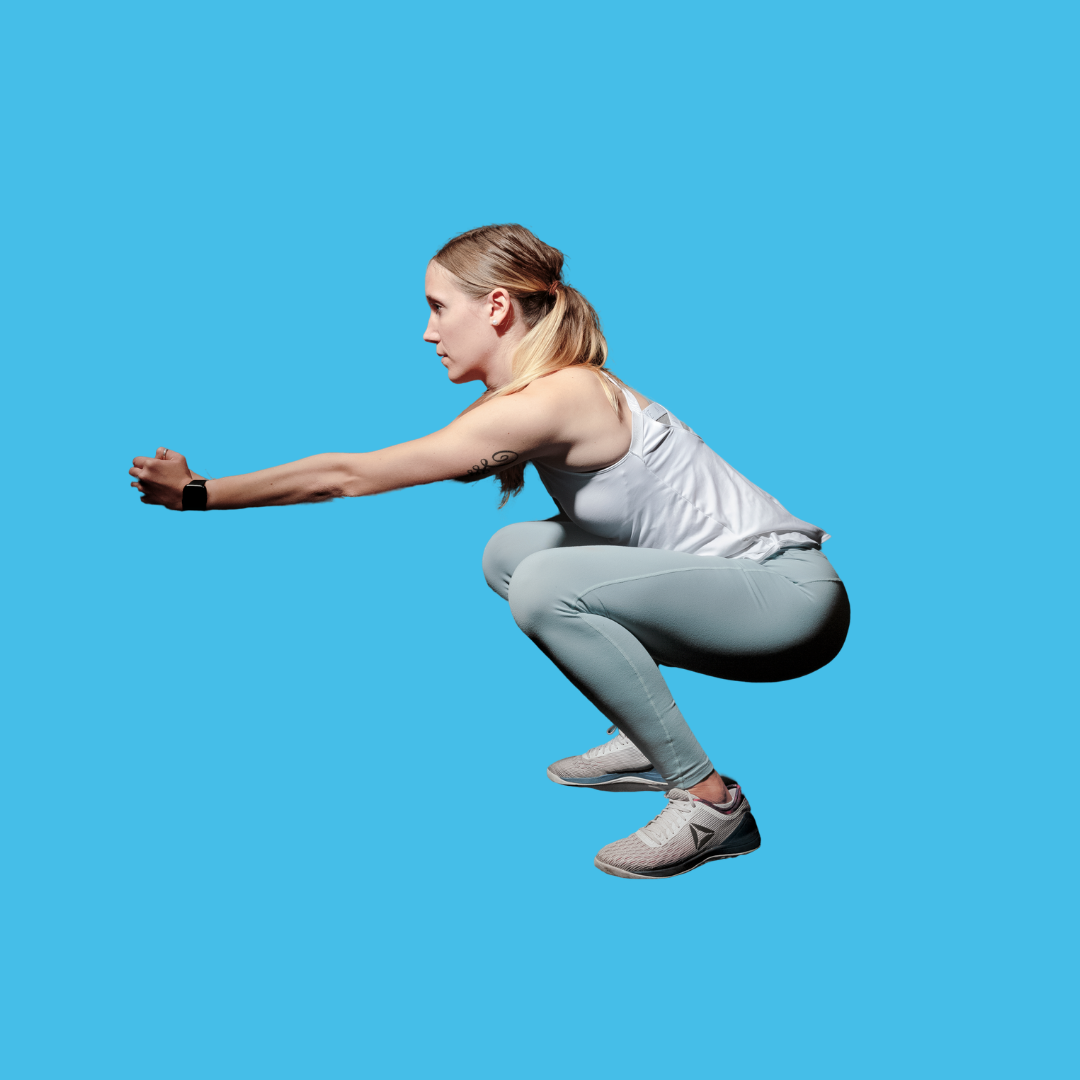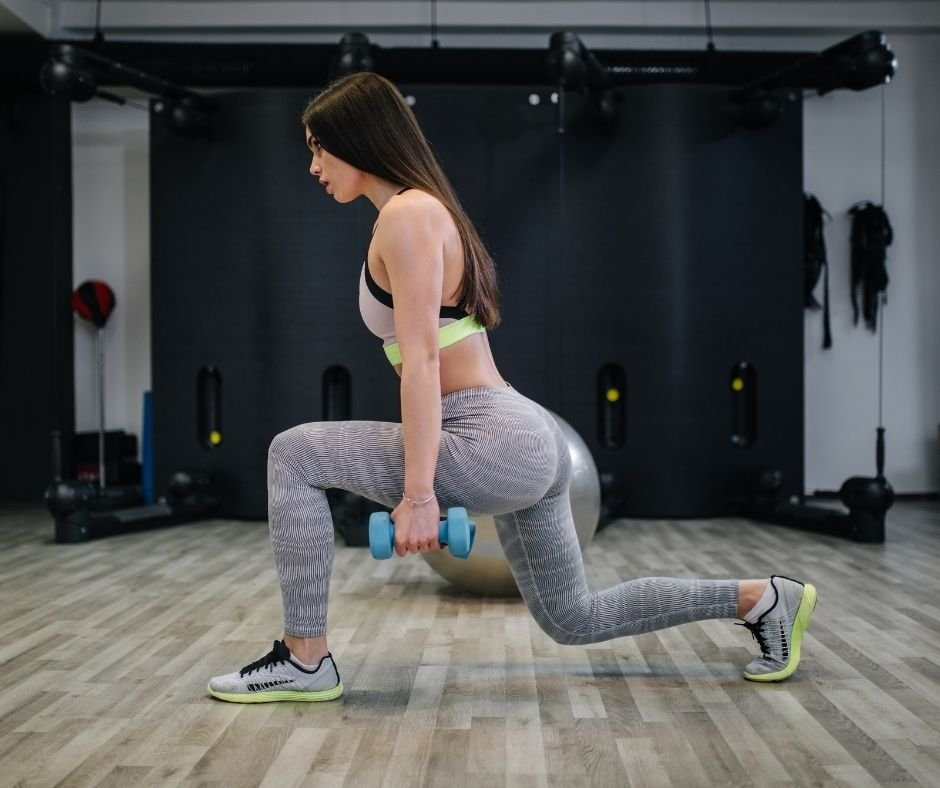Knees Over Toes When You Squat - Should You Worry?
I was treating an athlete in the clinic recently, and asked her to perform a squat - in order to get a sense of how well she could move. When she showed me her squat, I could see that for some reason she was unable to squat below parallel. I asked her “what's stopping you from getting any lower?” to which she replied “I've been told never to let my knees past my toes, because it's bad for my knees.”
For some reason, many people believe that if their knees go over their toes, their knees will spontaneously combust.
Is squatting with your knees over toes bad for your knees?
Whilst it is true that as your knees move forwards during a squat, the load around your knees (and in particular the load between your knee cap and thigh bone) is increased, the fact is that generally, our knees are strong and more than capable of managing these loads during a squat.
And if we try to prevent our knees from passing over our toes, then we may actually be creating an inefficient movement, and increasing stress in other parts of the body.
What tends to happen when we limit our knees from travelling over our toes during the squat is that the stress actually moves from your knees into your hips and your lower back instead. One study (linked below) which investigated this showed a 22% reduction in stress around the knee, but a huge 1070% increase in load at the hip when the knees were prevented from travelling forwards over the toes! This means a significant increase in the requirements of the muscles and joints around the hips and the lower back - and could potentially be a far more dangerous method for squatting.
“One study which investigated this showed a 22% reduction in stress around the knee, but a huge 1070% increase in load at the hip when the knees were prevented from travelling forwards!”
What is likely to be a more important cue to focus on is whether your knees move inwards versus outwards during the squat. Since the movement of the collapsing of the knee inwards (known as a knee valgus movement) has been linked with ACL injuries, and is likely not a movement pattern that should be encouraged.
Squatting and Knee Pain
However, there are still occasions where the forward knee movement during a squat should be limited - At least for a period of time. This includes athletes who have pain or injury at the front of knee or around the kneecap. (Remember the load between the kneecap and the thigh bone is increased as the knee travels forwards), as well as some other post-operative conditions such as meniscal repairs of the knee joint. In these instances the squatting movement may be modified for a period of time - for example with a wall squat, box squat or other leg strengthening exercise, until the damaged tissue is healed.
Build Bulletproof Knees
Exercises for Building Knee Strength
If you've ever been told not to let your knees go over your toes when squatting, you may have been surprised to hear that it's actually safe and effective to do so. There are several reasons why knees over toes is a good thing when squatting. First, it helps to engage the muscles around the knees, which can provide stability and protect the knees from injury. Second, it allows the hips to descend more deeply into the squat, which can provide a greater range of motion and increase the effectiveness of the exercise. Finally, it helps to keep the weight evenly distributed throughout the feet, which can help prevent pain or discomfort in the knees. So next time you're squatting, don't be afraid to go knees over toes.
Here are our top ten exercises to build knee strength:
1) Wall squats
Wall squats are a great way to build knee strength. When doing a wall squat, be sure to keep your knees over your toes. This will help to prevent injury and ensure that you are getting the most out of the exercise. Start by standing with your back against a wall and your feet shoulder-width apart. Slowly lower yourself into a squatting position, stopping when your knees are at a 90-degree angle. Hold this position for 30 seconds, then slowly return to the starting position. Once you have mastered this exercise, you can try adding weight by holding a dumbbell in each hand. By regularly incorporating wall squats into your workout routine, you can help to build strong, healthy knees.
2) Step-ups
If you're looking for a simple yet effective way to strengthen your knees, step ups are a great option. To do a step up, start by standing in front of a step or platform with your knees bent and your feet shoulder-width apart. Place your right foot on the step, then press down through your heel to lift yourself up. Keep your left knee behind your right knee, and make sure that your knees are over your toes as you stand up. Lower yourself back down to the starting position, then repeat with the left leg. Step ups can be done with bodyweight or with added resistance, such as holding dumbbells in each hand. Start with 2-3 sets of 10-12 repetitions on each leg, and build up from there.
3) Split Squat
One of the best ways to build knee strength is the split squat. In this exercise, you start in a lunge position with one leg forward and one leg back, making sure that your knees are over your toes. From there, you lower yourself down until your back knee almost touches the ground. You then push yourself back up to the starting position. You can also add weight to this exercise by holding dumbbells in each hand. The split squat is a great exercise for building knee strength because it specifically targets the muscles around the knee joint. This is important because strong muscles around the knees help to stabilize the joint and prevent injuries. Additionally, this exercise can be done anywhere, making it a convenient way to build knee strength.
4) Glute bridge
Glute bridges are a great way to build knee strength. When done correctly, they place your knees directly over your toes, which helps to strengthen the muscles and ligaments that support your knees. In addition, glute bridges help to stretch and strengthen the muscles in your hips and buttocks. This can lead to improved mobility and reduced pain in the knees, hips, and lower back. To get the most benefit from glute bridges, be sure to keep your knees over your toes throughout the entire movement. You should also focus on squeezing your glutes and hamstrings as you lift your hips off the ground.
5) Hamstring curl
For many of us, building strong knees is essential for staying active and keeping pain at bay. But what's the best way to go about it? One tried-and-true method is the hamstring curl. This exercise strengthens the muscles that support the knees, which in turn can help to prevent knee pain. Plus, it's a relatively easy move to do at home or at the gym. To perform a hamstring curl, lie on your back with your knees bent and your feet flat on the floor. Place a hand on each thigh for stability. Keeping your knees over your toes, slowly lift your heels toward your glutes, then lower them back to the starting position. Repeat for 10-15 reps. You can also add weight by placing a dumbbell on your thighs.
6) Swiss ball Hamstring curl
Hamstring curl is a great exercise for preventing knee pain. Proper form is essential to get the most benefit from the exercise and to avoid injury. Start by lying on your back with your knees bent and feet flat on the ground. Place your hands on the ground beside you for support. Slowly lift your hips off the ground, then raise one leg and bring your knee toward your chest. Keep your knees over your toes and resist the temptation to arch your back. Return to the starting position and repeat with the other leg. You should feel a stretch in your hamstrings and glutes as you perform the exercise. Hamstring curl is a great way to keep your knees healthy and prevent pain.
7) Sissy Squat
When it comes to preventing knee pain, the sissy squat is a great exercise to add to your routine. This move helps to build strength in the quads and hamstrings, which can take pressure off of the knees. To do a sissy squat, start by standing with your feet shoulder-width apart and your knees over your toes. Then, slowly lower your butt towards the ground. If you have trouble keeping your balance, you can hold on to a chair or wall for support. Once your knees are at a 90 degree angle, hold for a few seconds before returning to the starting position. Do 3 sets of 10 reps and you'll be on your way to stronger knees in no time!
8 ) Front Squats
If you're looking for an exercise that will help improve your knee health, front squats are a great option. In a front squat, your knees should stay over your toes throughout the entire movement. This helps to keep the knees from collapsing inward, which can put strain on the joint and lead to pain. Additionally, front squats improve quadriceps strength, which can help to take some of the load off of the knees. As a result, front squats can be a helpful exercise for those who want to protect their knees and reduce their risk of injury.
9) Double leg extension
If you're looking for a simple yet effective way to improve the health of your knees, try doing a double leg extension. This exercise involves simply extending both legs out in front of you while keeping your knees over your toes. Doing this exercise regularly can help to strengthen the muscles and ligaments around your knees, which can in turn help to protect your knees from injury. It can also help to improve your balance and flexibility, both of which are important for healthy knees. So if you're looking for a way to boost your knee health, give the double leg extension a try.
10) Backward Sled Pull
If your knees hurt when you exercise, it can be tough to find exercises that don't aggravate your condition. However, the backward sled pull is a great way to work your quads and glutes without putting too much strain on your knees. To do this exercise, start by attaching a sled to a low pulley. Then face away from the pulley and place your feet shoulder-width apart. Bend your knees and hips to lower yourself into a squatting position, then hold onto the sled with both hands. From there, stand up and pull the sled backward, keeping your knees pointed forward throughout the movement. As you pull the sled, drive your hips forward and squeeze your glutes at the top of the movement. This exercise is a great way to work your lower body without putting too much pressure on your knees.
Prehab Your Knees
Here are five tips to help prevent knee pain:
1. Make sure your muscles are strong and balanced
Anyone who has ever suffered from knee pain knows that it can be debilitating. Even simple activities like walking or running can become extremely painful, and knee injuries can take weeks or even months to heal. One of the best ways to prevent knee pain is to build strong and balanced muscles. The quadriceps and hamstrings are the two main muscle groups that support the knee, and strengthening these muscles can help to take the strain off of the knee joint. In addition, exercises that improve balance and flexibility can also help to prevent knee injuries. by keeping muscles strong and joints flexible, you can reduce your risk of knee pain and enjoy a more active lifestyle.
2. Maintain a healthy weight
Knee pain is a common complaint, and it can be caused by a variety of factors. One of the most important factors is weight. Excess weight puts additional stress on knee joints, and this can lead to pain and inflammation. Maintaining a healthy weight is one of the best ways to protect knee joint health. In addition, regular exercise helps to strengthen knee muscles and support joint structure. By taking steps to maintain a healthy weight and keeping knee muscles strong, you can help prevent knee injuries.
3. Warm up properly before exercise
One of the best ways to prevent knee injuries is to make sure you warm up properly before exercising. A proper warm-up will help to increase blood flow to the muscles and tendons around the knee, which will in turn help to reduce the risk of injury. stretching the muscles and tendons around the knee is also important, as this will help to improve flexibility and reduce the risk of strains and tears. By taking a few minutes to warm up before exercising, you can help to prevent knee injuries and keep yourself healthy and active.
4. Foam roll your Quads
Foam rolling helps to release tightness in the muscles and connective tissues around the knee, which can otherwise lead to strain and pain. It's also a great way to warm up before exercise, as it increases blood flow to the area and helps to loosen up the joints.
5. Stretch after activity
Knee injuries are all too common, especially among athletes. But anyone can be at risk, especially as we age and our joints become less flexible. That's why it's so important to stretch regularly, both before and after exercise. Stretching helps to warm up the muscles and tendons around the knee joint, making them less susceptible to injury. It also helps to improve range of motion and flexibility, which can further reduce the risk of knee injuries. So next time you're heading out for a run or a workout, take some time to stretch first. It just might save your knees in the long run.
Knees over toes when squatting is safe and effective. When done properly, this exercise can help improve your strength, flexibility, and balance. Be sure to use proper form and listen to your body as you begin incorporating squats into your workout routine.
Who is Knees Over Toes Guy"?
You might have seen him around town, or maybe you've spotted him lunging around your neighbourhood - knees over toes guy. Who is this man, and why does he walk like that? Some say that knees over toes guy is simply eccentric, while others believe that he is following an ancient tradition. The truth is, no one really knows for sure. What we do know is that knees over toes guy first appeared sometime in the early 2000s, and he has been walking his unique way ever since. While some may find his manner of walking to be strange, there's no doubt that knees over toes guy brings a smile to everyone's face. So the next time you see him, be sure to give him a wave…
Just Kidding..
Ben Patrick, also known as "Knees Over Toes Guy", is a strength coach and the founder of the "Athletic Truth Group". This group is a gym and online training service based in Clearwater Beach, Florida. Ben had to overcome debilitating knee and shin pain, as well as multiple surgeries during his time as a basketball player. He did this by taking knee and foot strength training to their fullest potential. As a result, he was able to improve his own knee health and performance. This allowed him to have a successful junior college career in basketball. Ben is known for sharing the fact that going “knees over toes” is not only safe, but can be beneficial for your training.
References:
Effect of knee position on hip and knee torques during the barbell squat.
https://www.ncbi.nlm.nih.gov/pubmed/14636100
Physiotherapy management of patellar tendinopathy (jumper's knee)
https://www.sciencedirect.com/science/article/pii/S1836955314000915











